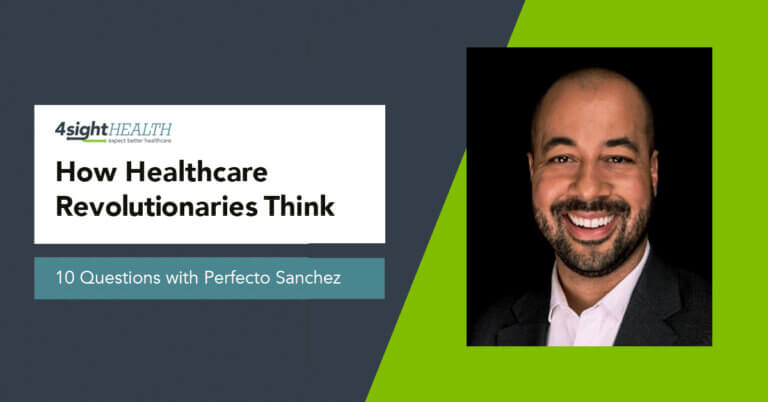November 5, 2024

Getting Retail Primary Care Right: 5 Ways to Fix a Broken Model
Getting a medical checkup the same place you pick up groceries — aka retail primary care — has gained a lot of hype, but plans to put primary care doctors inside Walmart, Walgreens and CVS are running out of steam. The ups and downs of retail primary care raise fundamental questions for anyone paying attention, especially regarding these three areas:
- Program design
- Business-model durability
- Retail primary care’s place within the broader healthcare ecosystem
Patients certainly benefit from increased primary care access through retail delivery channels. For that reason alone, the retreat of retail primary care providers from the marketplace is cause for significant concern. Fundamental care transformation requires easy and affordable access to primary care services. Unfortunately, standalone retail primary care business models are not financially sustainable. Success requires offering retail primary care access within larger, integrated care networks.
Transformation requires revolutionary thinking. Here are five factors that increase the likelihood that retail primary care can succeed and thrive. Any reset that incorporates these five factors can enable health systems and other healthcare organizations to employ retail primary care as the front door to healthcare service provision for their patients.
1. Care Models Have To Care
Care models outline protocols for both patients and team members to receive and deliver care. For instance, a diabetes care model includes defined steps like patient assessment, glucose monitoring, medication management and follow-up services to improve care outcomes.
For care models to work, they actually have to care for patients and treat conditions that patients have. This insight might seem obvious, but organizations continue to learn that care models have to be real, not theoretical.
Caring for patients requires empathy, engagement and a welcoming environment. As such, real caring incorporates clean environments (not necessarily brand-new ones), language that conveys respect and cultural literacy, as well as thoughtful interactions between patients and caregivers. Caregivers include physicians, advanced practice professionals, medical assistants and administrative team members. To deliver “caring” care, organizations may need to augment patient experience training similar to customer service training — yes, customer service.
Patient loyalty in a primary care-focused model is essential to gain customer trust and confidence. Both are prerequisite for engaging in pro-active shared medical decision-making. Together, these relationship and care management attributes increase the likelihood that patients will return for care on a regular basis, a foundational element in a primary care focused retail model.
Caring for patients’ conditions requires more than meeting quality metrics and providing referrals. At its core, caregivers must assess and address urgent concerns and/or undertake evidence-based care for chronic conditions.
Demographics shape treatment protocols. Primary care services for children and young adults differ from those established to treat chronic conditions in older individuals (> age 65). The interactive nature of many of these conditions and how they manifest is all the more reason for targeted care to occur in primary care settings. Predictive analytics, protocols, order sets and workflow efficiencies along with rigorous follow-up reviews support appropriate diagnosis and evidence-based care in primary care settings.
2. A Different Kind of Cost Accounting
 Multiple providers have applied time-driven, activity-based costing to examine new treatment and service lines, like cancer care. The same time- and cost-based analytics can advance the efficiency and effectiveness of primary care service provision in retail settings.
Multiple providers have applied time-driven, activity-based costing to examine new treatment and service lines, like cancer care. The same time- and cost-based analytics can advance the efficiency and effectiveness of primary care service provision in retail settings.
Not every patient fits easily into standard 15- to 20-minute appointment slots. Complex patients with multiple medical and social problems differ from healthy younger individuals with urgent care complaints. Complex patients require more evaluation time and treatment intensity. Triaging patients and allocating resources appropriately enables primary care organizations to evaluate and adjust team member activities throughout patient visits, from check-in to checkout, to optimize care outcomes.
Administering medications or vaccines, addressing patient complaints and scheduling appropriate referrals are all part of cohesive patient journeys. These take time. Integrating primary care services effectively within integrated care networks may make this easier. It also requires a broader view of patient needs and preferences to achieve the best care outcomes at the lowest cost.
Accurate cost accounting data informs more appropriate resource utilization for an organization’s core unit of activity, the clinic. Provider organizations can use cost-accounting data to reconfigure labor models and redesign patient care tasks and responsibilities. Understanding the time and costs of treatment protocols is paramount to efficient and cost-effective care delivery.
3. Team Training and Education
The quest for growth requires expansion and standardization. Accommodating growth challenges core organizational functions from real estate to human resources. Layering in training and education beyond initial onboarding is a critical step that many healthcare organizations miss as they grow the footprint of their operations.
Incremental training and education using simulation, role-playing and procedural review can drive superior clinic performance. The return on training investments massively outweighs a missed half-day or days of clinic visits every quarter or six months. Benefits include stronger team identities, constructive learned behaviors and better situational awareness. These enhanced behavioral attributes enhance competitive advantage. Moreover, they reinforce compliance, process and patient and team member loyalty.
Great teams collaborate through better care coordination. They deliver superior clinical and financial outcomes. Enhancing human potential generates enormous organizational returns through improved caregiver loyalty and retention. Engaged caregivers go the extra mile for customers. Like Benjamin Franklin wryly observed centuries ago, “Don’t be penny-wise and pound-foolish.” Always invest in your people.
4. Aligning Other Aspects of Care
 Great primary care can solve most but not all patient complaints. Some patients require specialty care, hospitalization and/or post-acute care. Rather than neglect patients’ external care needs, primary care coordinators must make intentional efforts to align specialty care, acute care, and even post-acute care with organizations providing those services within integrated delivery networks.
Great primary care can solve most but not all patient complaints. Some patients require specialty care, hospitalization and/or post-acute care. Rather than neglect patients’ external care needs, primary care coordinators must make intentional efforts to align specialty care, acute care, and even post-acute care with organizations providing those services within integrated delivery networks.
No doubt, this is easier if that organization is a delivery system with an employed medical group and strong relationships with partnered physicians. When this isn’t the case, coordinated care delivery is still achievable by a) hiring select specialists into a primary care plus specialty type of organization or b) partnering with key specialty/multispecialty groups and select hospital partners.
This requires knowing the local landscape and having solid analytics that allow retail primary care organizations to accurately assess the quality and efficiency of the care delivered by specialty physicians and/or hospitals. Effective network management is a key capability for successful retail primary care operations.
5. Reconciling Volume and Value
Absent alternative revenue streams, fragmented, volume-based primary care business models rarely achieve financial stability. Practicing risk-based medicine while simultaneously churning patient visits sends mixed messages to those caring for patients. As a consequence, it’s difficult to manage holistic care delivery.
Creating and supporting different roles for physicians and advanced practice professionals differentiates successful care networks. Examples include high-risk patient care teams with smaller panels, comprehensive care teams with larger panels, and low-risk patient care teams with open access.
Accurate registration information and scheduling are essential for success. Equitable compensation with team-oriented compensation plans and rotation to other teams, if desired, are additional steps that ensure such a model can flourish. Payment mechanics must align with resource utilization. Rewards for better care outcomes align patient and caregiver interests.
Bottom Line
Expanding primary care has health benefits for patients and populations. [1] Retail primary care to date has created rivulets of innovation and market penetration. Whether they achieve greater impact depends on the willingness of individual retail primary care organizations to pursue care delivery as part of integrated and holistic delivery networks. Success requires high-functioning teams that work with patients to solve their specific health and healthcare problems in an efficient, cost-effective and consumer-centric manner.
Sources
- Stange KC, Miller WL, Etz RS. The Role of Primary Care in Improving Population Health. Milbank Q. 2023 101(Suppl 1):795-840. doi: 10.111/1468-0009.12638.





